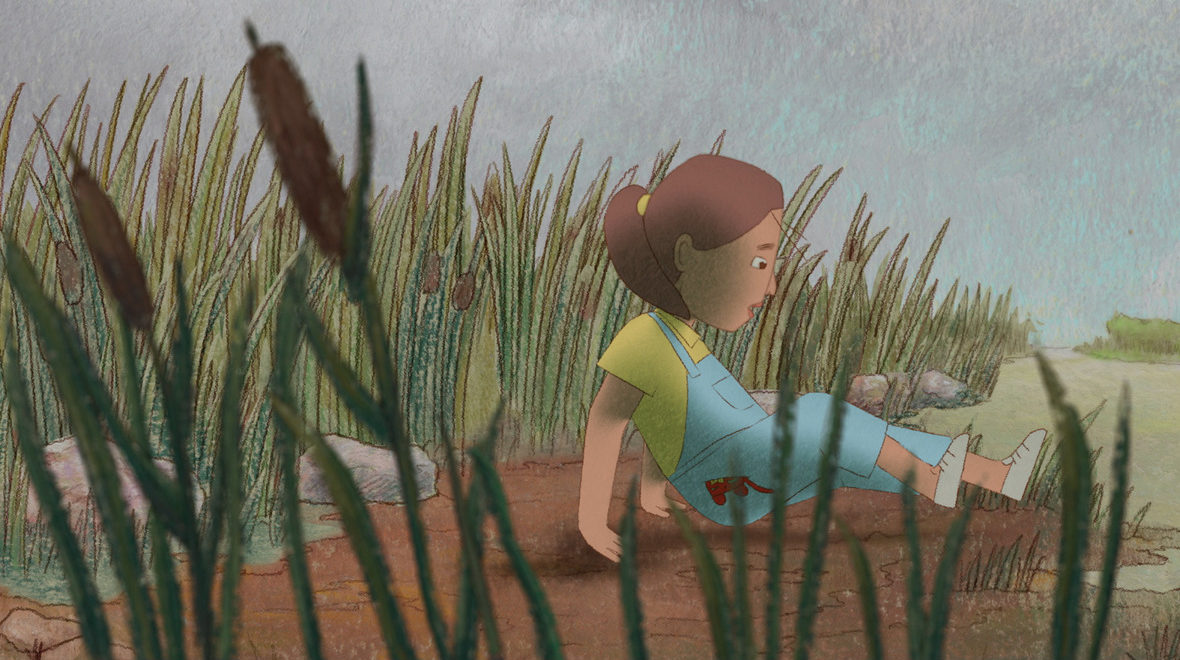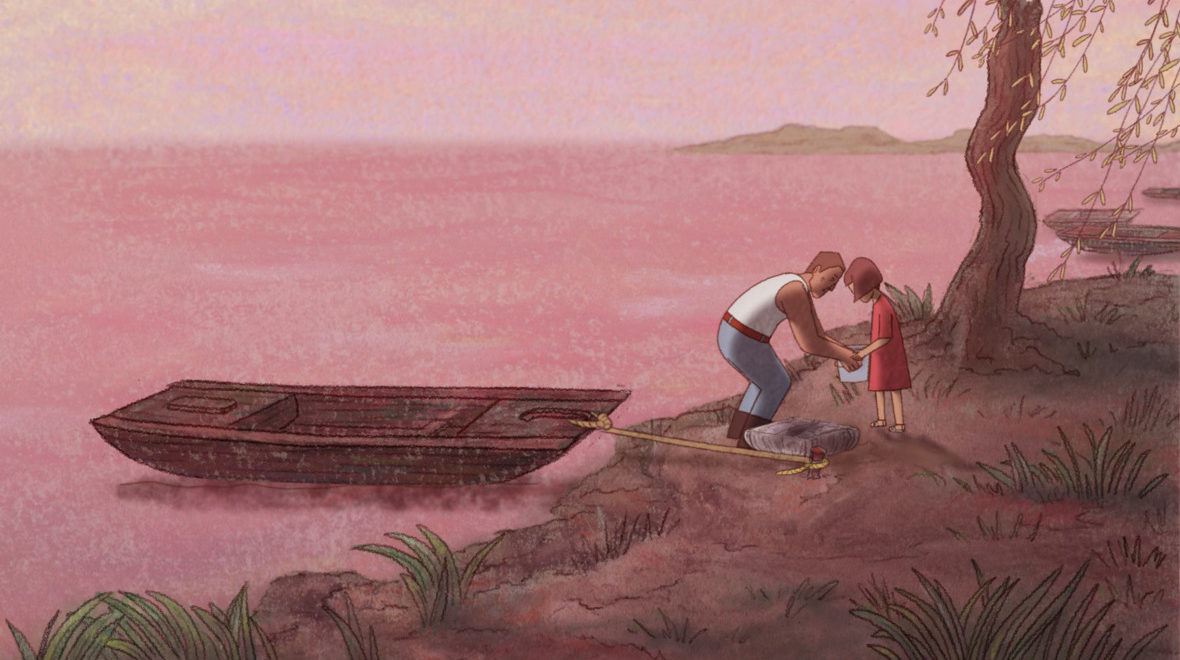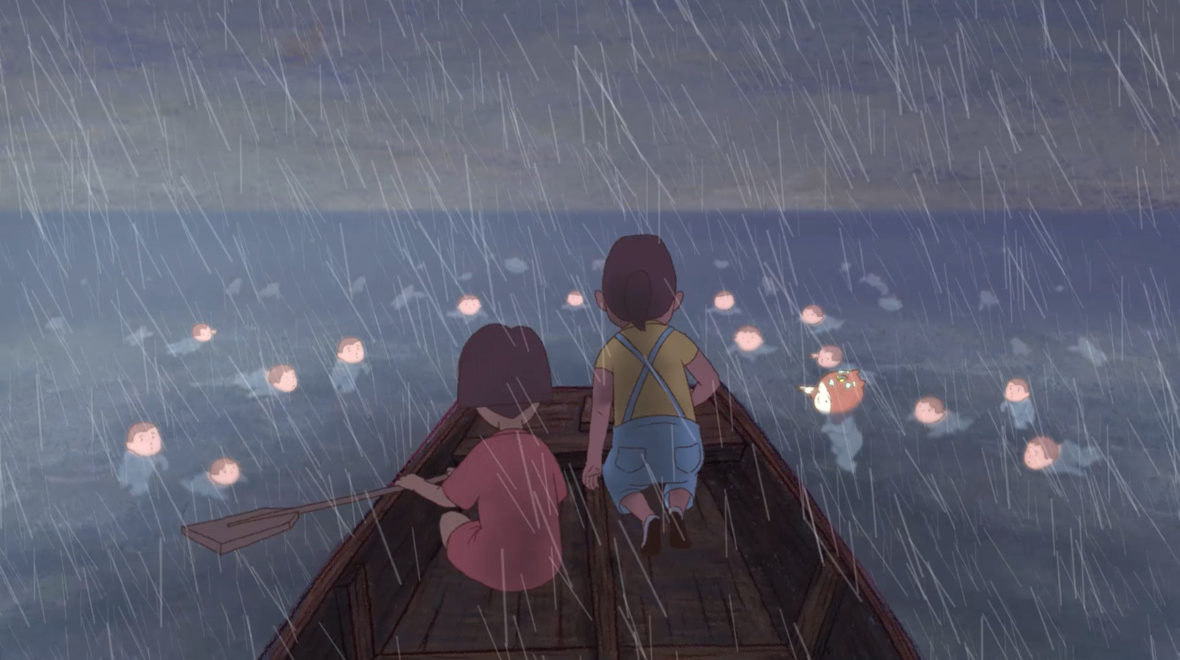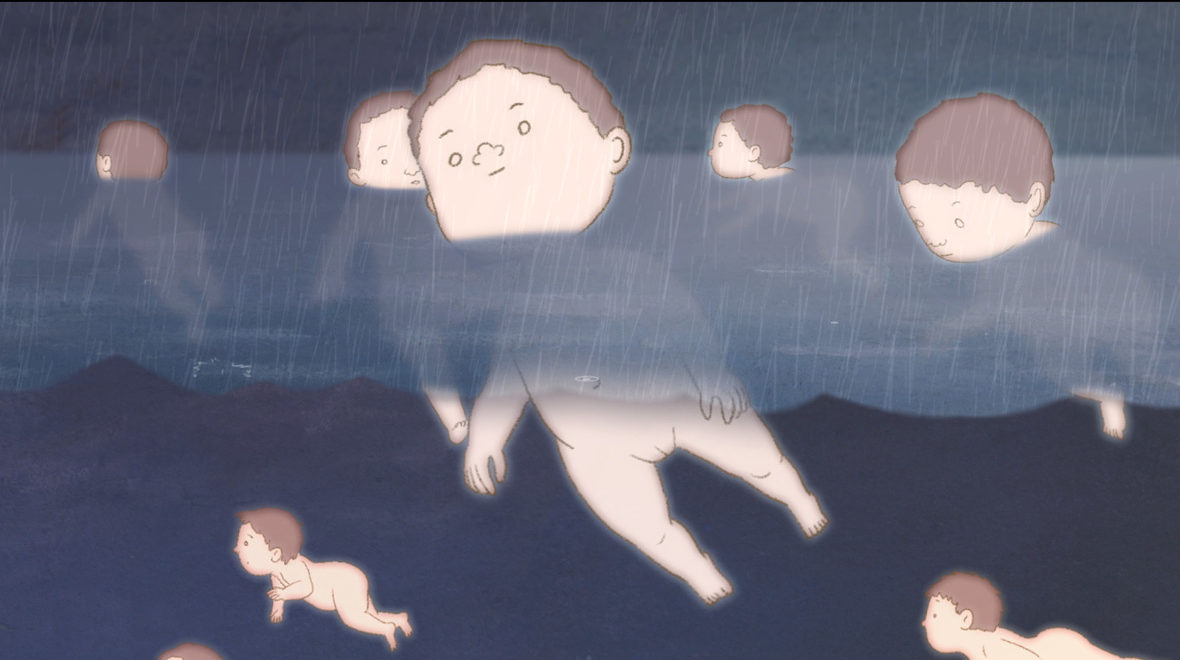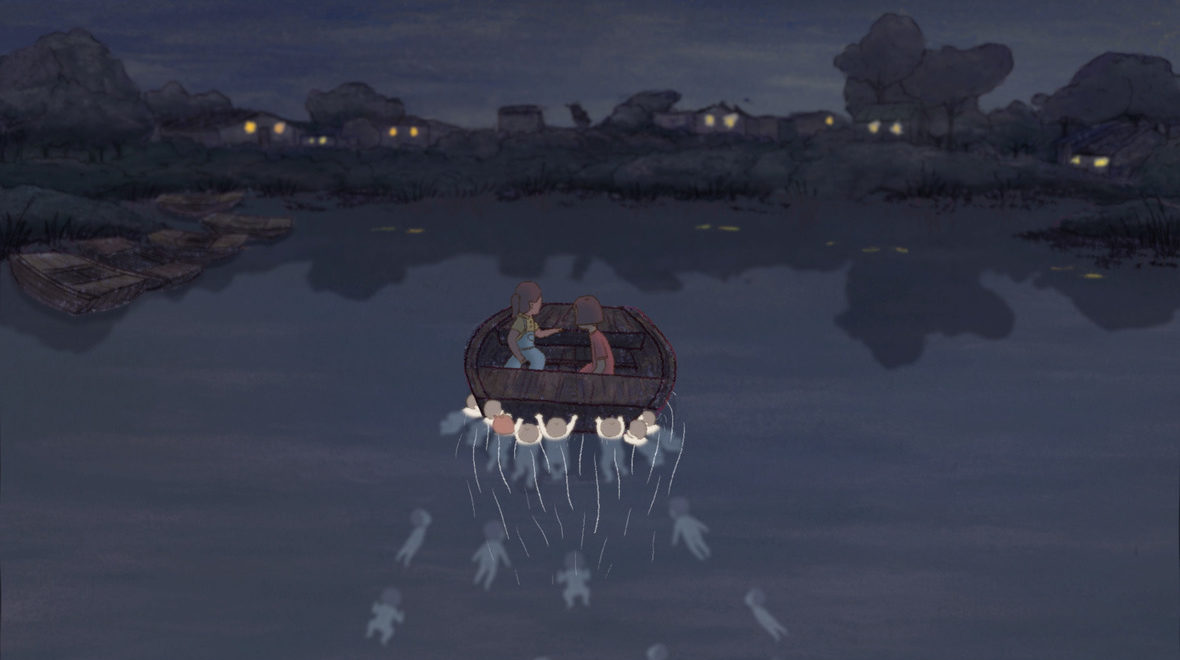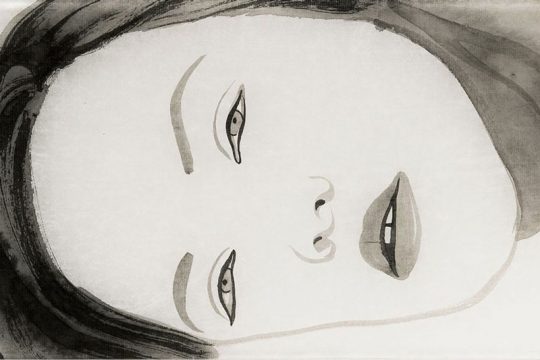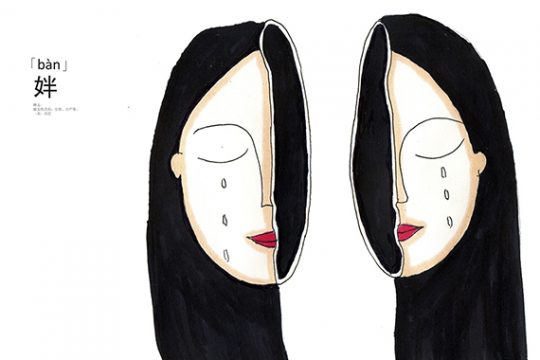无法观看?前往腾讯视频
In the dead of night, two young girls row a boat through a downpour. A gust of wind blows the hat off of one girl’s head, and she reaches out to grab it, dropping her oar into the river. Looking towards the water, they see a baby emerge from the currents. In the blink of an eye, their boat is surrounded by similar figures. These mysterious newborns swarm the boat, pushing the girls back to their port of departure. Despite the girls’ longing to leave their small village, they find themselves back where they started.
This the most memorable scenes from Step into the River, an animated short by Chinese director Ma Weijia that examines the issue of gender inequality and societal change. Ma, having grown up in a rural village in China, often heard tales of newborns being left in the river. Most Chinese parents at the time hoped for sons, so when their newborn turned out to be a girl, they abandoned them. As an adult, she met a number of Chinese adoptees, a disproportionate number of which, she noticed, were females. These experiences led her to come to a bleak realization: male chauvinism can come in extreme forms. While gender equality has made great strides in the years since, the haunting image of newborn girls being abandoned in the river never left her mind.
下着雨的河面上,水流湍急,一艘小船,两个女孩,桨不小心脱了手沉入了河底。
远处,游来了某具肉体。
一个婴孩,两个婴孩,一群婴孩……她们面目柔和,不见喜怒。这些婴孩的幽灵托着船,将两个女孩送回了出发的岸边——尽管她们想逃离村庄,去往城市。
这是 90 年出生的独立动画导演马维佳在构思《河岸》这部短片时,第一个蹦入脑海的画面。她想起自己小时候,村里流传着有关很多刚生下来的女婴会被丢弃在河里的故事。后来,马维佳又听闻几次身边女孩被抱养的身世,她切身地感受到:这个社会偏爱男孩。这种不公平的倾向甚至可以不惜代价。虽然现在这样的现象基本已不复存在,但那些婴孩沉入水底的画面在马维佳的脑海里萦绕不去。
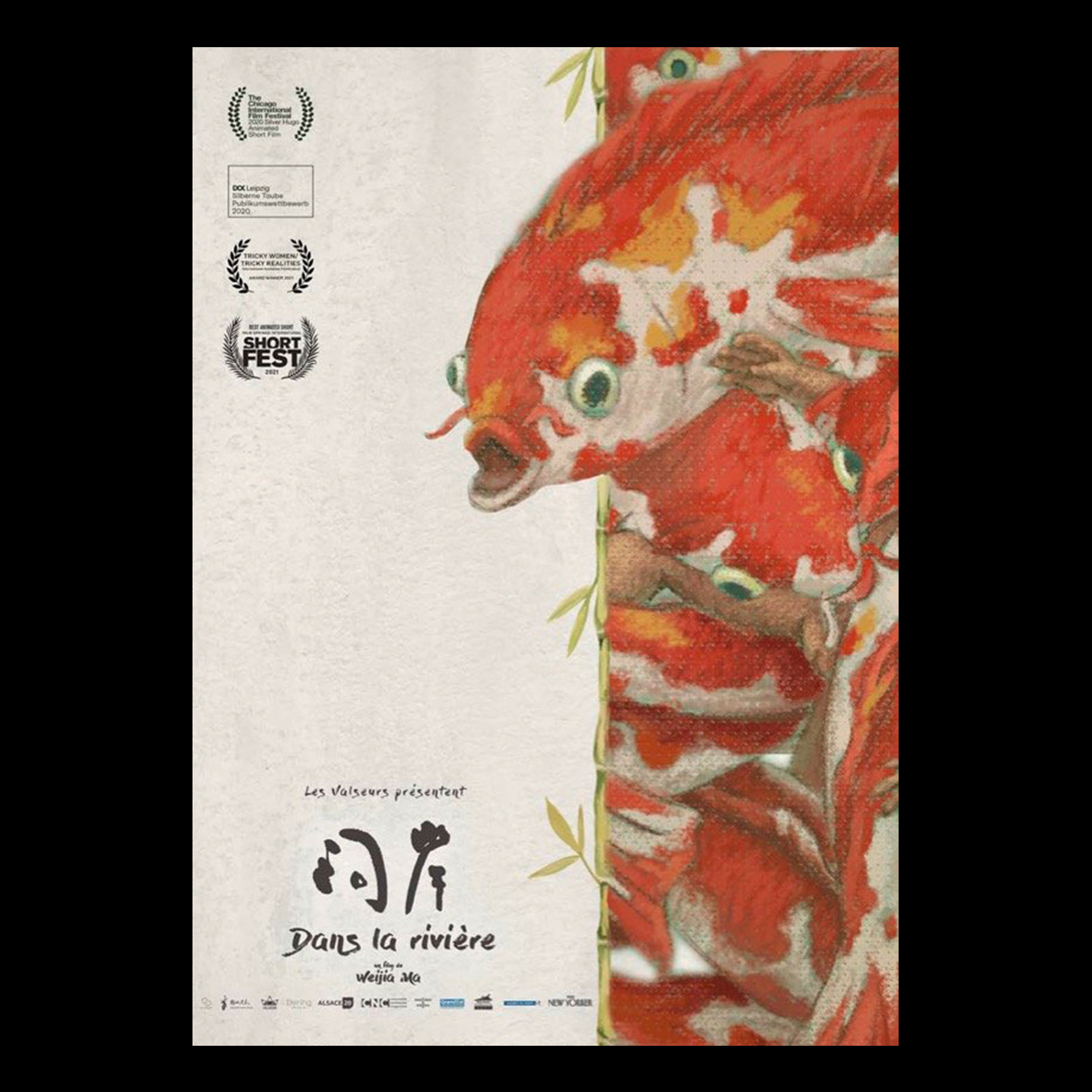
Step into the River is told through the perspective of Wei and Lu, two young girls living in the Chinese countryside. Wei is a “stay-at-home child,” a term referring to children left behind in the village while their parents pursued better job opportunities in the city.
In the village, Wei befriends Lu, a girl with a distinctive birthmark on her face. Lu was adopted by a fishermen after she was discovered abandoned on the riverbanks as a toddler. The two quickly became close, bonding together over a shared resentment over being abandoned.
Despite the air of melancholy that permeates the narrative, the film’s art style feels gentle and calming, defined by soft palettes that capture the idyllic lifestyle of the quaint village in faithful fidelity. The fluidity of each frame and the gradient colors that have replaced the sky instill a sense of the fantastical, but the story and characters are unmistakably grounded in reality. To Ma, the story is far more important than aesthetics.
Lu and Wei are based on real-life accounts and some of Ma’s own experiences. Even the poster is based on her childhood memories. Ma kept a goldfish as a pet as a child, and looking back, she realized how cruel it was to confine it within a fish bowl. To her, it’s a curious practice even today—people don’t blink an eye at the thought of restricting another animal’s freedom. There are many clear parallels between a goldfish’s existence and the experiences of many Chinese girls, and so, she thought it a fitting motif for the film’s poster. On the poster, a school of fish seems crowds half the frame. Several human hands reach out between what little space each fish has left behind, as if trying to escape from under their suffocating weight. One single fish has squirmed out of the confines of the composition, as if springing out of the water—a lone, lucky survivor.
女孩,金鱼,跃出水面
《河岸》讲述了 Wei 和 Lu 两个女孩的故事。Wei 是留守儿童,自小由奶奶抚养,有一天她得知原来自己是这个家里的第二个孩子——因为哥哥不幸夭折,才有了她;Lu 在出生的时候被父母丢在了河里,由一名船夫捡起收养,她身上有显眼的胎记,因此时常被村里的男孩欺负。两个女孩走到了一起,她们想走出自己“被抛弃”的命运。
动画的叙事和呈现风格细腻而动人,透着水乡独有的柔和色调。画面的衔接上尤为出彩,天马行空又保持着流畅自然。但马维佳看重的是故事本身,它从现实而来。
《河岸》中两个女孩的故事都有真实原型,也有马维佳自己的影子。短片中出现的金鱼是电影海报中的主视觉元素,也是马维佳小时候养过的动物。在那个默许着禁锢与残忍的地方,金鱼是超现实般的明亮与慰藉,它好似是一种呼唤:跳出水面,穿过河流。
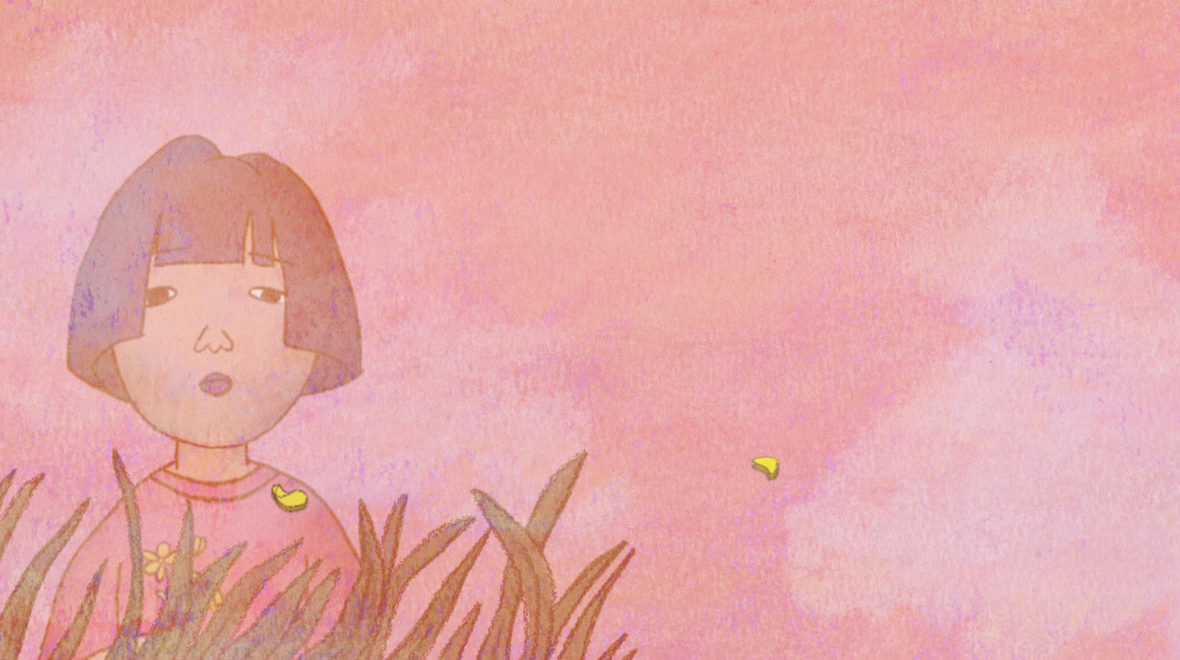
Ma was born in Chaohu, a city on the rural outskirts of China’s Anhui province. A small river ran through the city, and some of her fondest childhood memories revolved around that flowing stream. The river even inspired her work prior to Step into the River, though the same motif represented vastly different themes in those works.
In her animated short from 2015, The Same River Twice, Ma presents a touching tale of family and nostalgia, with the river in the film representing the generational divide between family members. In Step into the River, the river can be seen as symbolizing the pain of the past. It’s a pain shared by the two female protagonists, their families, and those newborns who never had the chance to grow up.
河流,时间,共同体
马维佳出生于安徽巢湖,河道和她的生活紧密相连。由生命经验而来,“河流”是马维佳钟爱的元素,在《河岸》之前,她就创作了《父亲与河》这个作品。《父亲与河》呈现的是家庭的记忆,这条“河”在上一代与下一代,在家乡与出走之间顺流而下;《河岸》中,这条“河”承载了特定社会背景下的时代伤痛,它属于那两个女孩和她们的家庭,也属于河流深处那些被剥夺了长大机会的孩子。
“Even though this story isn’t a tragedy, in that the two girls survived and returned to their village, it’s not a particularly happy ending,” Ma says.
The two girls’ lives will go on as it did before their voyage, but their dreams of leaving now feel that much further out of reach. In fact, there is seemingly no escape from their situation. The conclusion of Step into the River is meant to evoke the experiences of girls who grew up during Ma’s generation. Even though they’re survivors, they’ve still been forced to endure their share of unfortunate circumstances. Even less fortunate are the newborns who never got a chance to grow up, and Ma felt that it was important to remember them. “I considered making them into vengeful ghosts, but I decided that I wanted to capture their innocence,” she recalls. “They were pure souls whose lives were snuffed out even though they did nothing wrong. So in the film, they’re depicted as friendly spirits who’re out to protect the girls.”
The river is a silent witness to an ever-evolving world. No matter how the world changes around it, the river remains the same. In that regard, Ma also sees the river as a symbol of time. The river surges in perpetuity, pulling along all that’s caught in its wake. The film’s English title, Step into the River, was conceptualized as a statement towards the inevitability of life. It’s a reminder that no matter who you are, you must step into the river’s eternal currents and be pulled along with everyone else.
“虽然这个故事的结局并不是悲剧,这两个幸存者最后回到了村庄,家里也有挂念和等待她们的家人,但这也不是幸运。她们出走到半当中,然后又回到了原点,好像是有一些成长,好像是应该要继续好好生活,但从另一个角度来说,她们其实逃避不了这个环境。就像我们从那个年代过来,身为女孩,可能就是一个幸存者,但我们也都同时担负着这种幸运和不幸。”在处理对那些婴孩幽灵的呈现时,马维佳也谈及:“其实我也想过是不是要让那些曾经被丢弃的孩子变成某种‘怨灵’,但最后我还想表现出这些生命的无辜。她们本身什么都不知道,什么都没做错,就被扼杀了。反过来,她们会去保护这两个幸存的女孩。”无论是河面上想要划船逃走的女孩,还是被埋在河底的婴灵,或是在这片土地上千千万万个成长的女孩,都是社会强力观念之缚下的命运共同体。
河流见证了多少故事,吞吐了多少变幻,哪怕河岸上的世界物是人非,河流依然在奔。在马维佳看来,“河”就是时间的象征。承载一切,又带走一切,流动成永恒。《河岸》的英文名是“Step into the river”,这个名字透着某种决绝:无论是在什么样环境下成长的个体,都注定要踏进河流,逆流的阻力、顺流的迷惘、看不清的河底、同流合在的幸存者或幽灵……那都是发觉避无可避,身处时代之流时的真实触感。
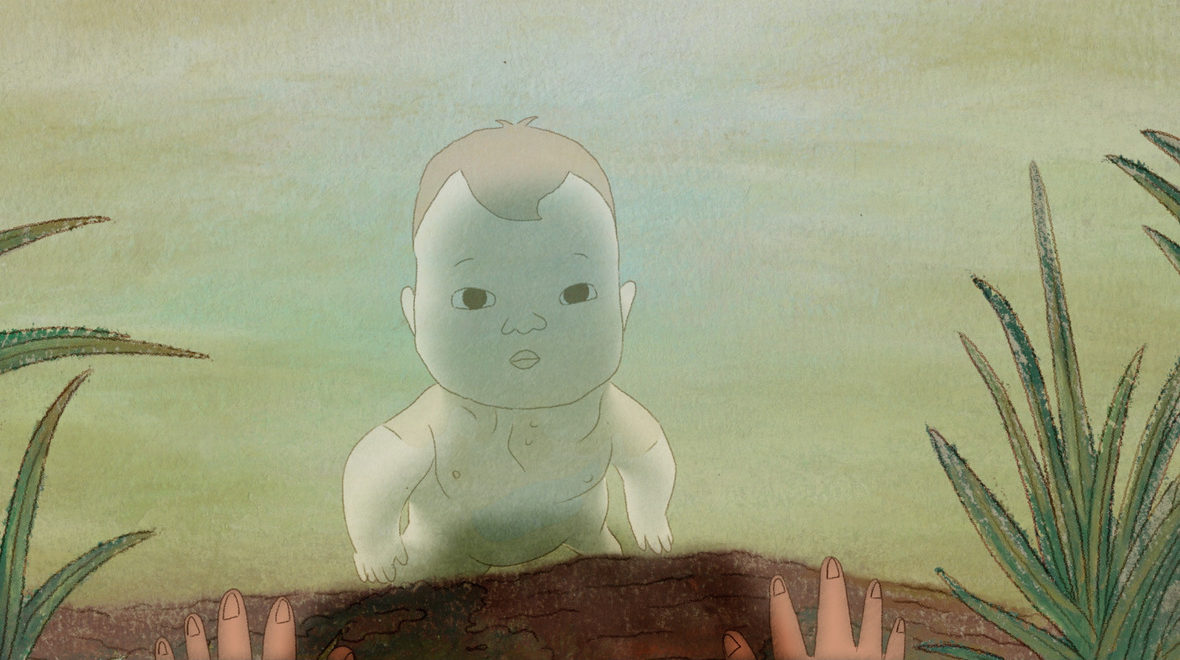
Step into the River was shortlisted at the 94th Academy Awards for “Best Animated Short Film,” and nominated at the 15th FIRST Youth Film Festival for “Best Dramatic Short Film.” These accolades are well-deserved for Ma and her team, who spent the better part of five years developing and producing the film. Despite how time consuming the project ended up being, the positive feedback has made their efforts worth it. “Animation is all about giving movement to still images, and when you go into it with an experimental spirit, there are infinite methods to go about it,” she says. “If you’re bold enough, you can really push the boundaries, especially in how the story is told, but that’s only one aspect. It’s important for directors to establish their own approach to animation—there’s plenty of room for experimentation, whether it be in the art style or in the ways that frames are sequenced.”
流动起来的故事
《河岸》表现不俗,入围了第 94 届奥斯卡最佳动画短片名单、第 15 届 FIRST 青年电影展最佳剧情短片等多个奖项,这背后是马维佳和团队长达五年的创作成果。动画这种创作形式很耗费时间,但这种消耗交换来的是独一无二的艺术体验。
对于创作者来说,其不受限制的表现方式特别有吸引力。“动画,就是要把画面动起来,从实验性的角度来说它的方法是无限的,它所能够触达的目的也更为丰富,叙事只是其中一种。所以对于导演来说,探索一种独特的动画语言很重要,在视觉风格上,在画面如何去动的设计上,都有很大的空间可以实验。”
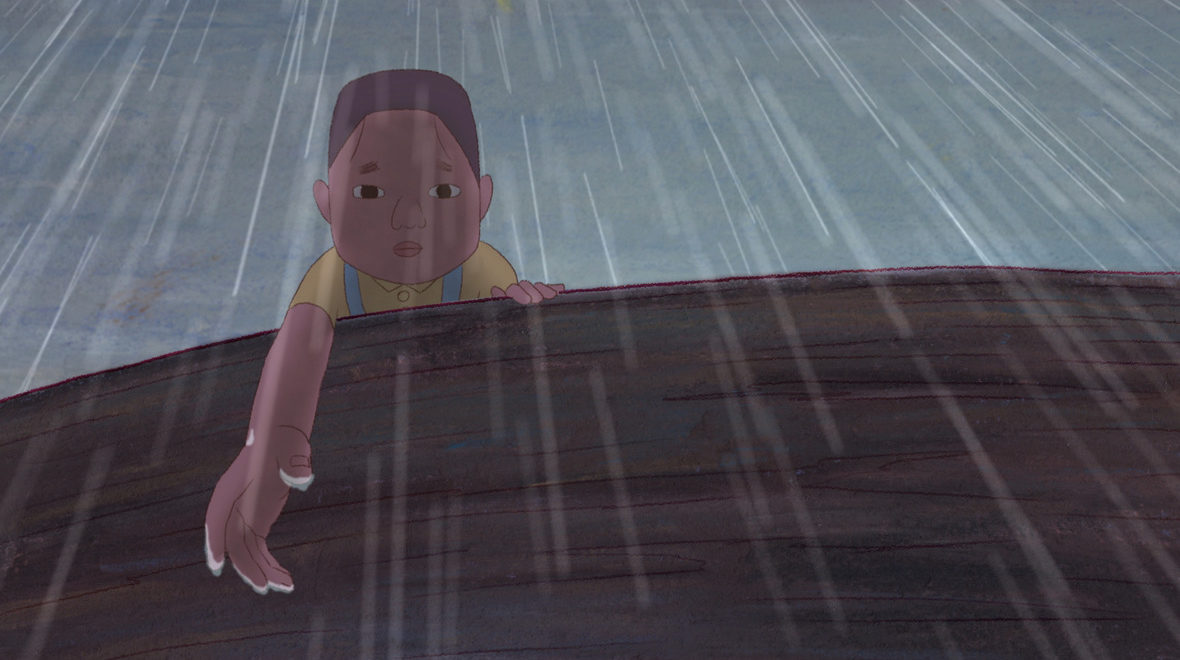
Ma believes that animation is a medium that can feel detached from reality, which can be a perk in that it allows for audiences to digest what may otherwise seem overly graphic or repulsive. “For example, if I wanted to show a baby’s lifeless body, that’d feel too much in a normal film,” Ma says. “If the same idea shown in an animation, audiences will be more willing to view it, and in accepting it, they accept the reality that I want to confront them with.”
Ma sees animation as a medium of endless possibilities, but this can be both beneficial and detrimental. Ma believes her films have been received so well because she places a lot of importance on establishing a clear narrative. However, despite her success with more narratively driven works, she’s also keen on treading into unexplored creative territories with animation going forward. This year, she will be releasing an experimental film that blends real footage with animated scenes. The film will be played alongside a live, improvised score.
For Ma, the river stretches forth far into the horizon, and there’s still plenty of sights to soak in as she continues down its waterway. Oar in hand, she’s excited to see where it’ll eventually take her.
而对于观众来说,马维佳觉得动画赋予了观众更为夸张的观看体验,同时为观众拉开一段安全的接受距离,“就比如我的短片里有婴孩尸体的画面,如果是实拍,可能就拍不出来;但如果是动画处理过了,观众就能接受那样的画面,同时接受那样的现实性。”
动画这种形式所赋予的创作容量极为庞大,对于马维佳这样倾向于叙事型动画的导演来说,关键便是在这“无限可能”中找到清晰的作者路径,使得故事能够紧密而灵活地流动起来。她也在一边创作着新的作品,一边探索着更多动画形式上的可能,试图找出一种更利于独立创作的低成本方式。今年夏天,她结合了实拍与动画的实验影像将和即兴音乐融合在一起,在由杨浦大剧院变身的 Young 剧场上演——更多的创作实验在等着马维佳,面对她的河流,那是她手中的桨。
